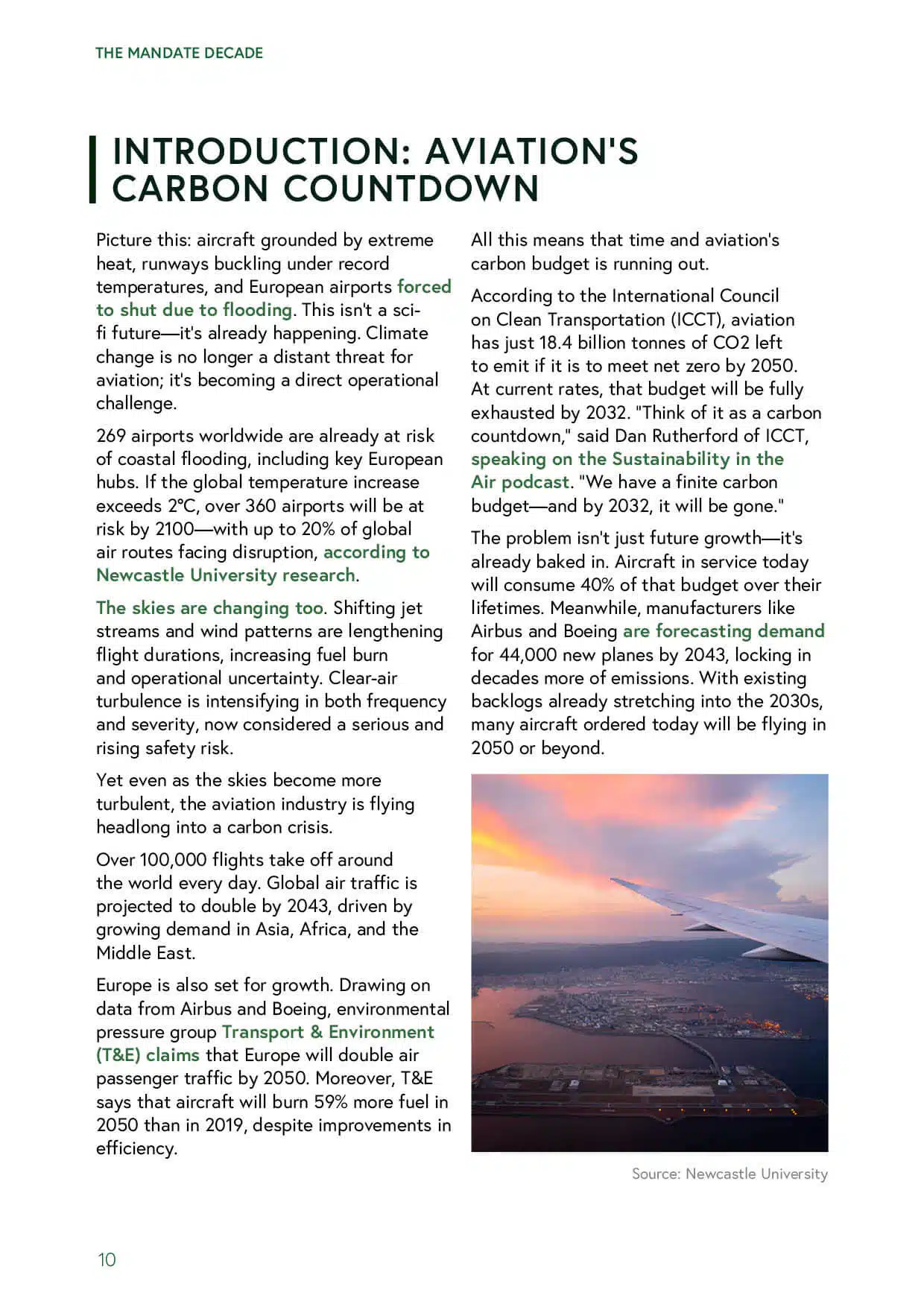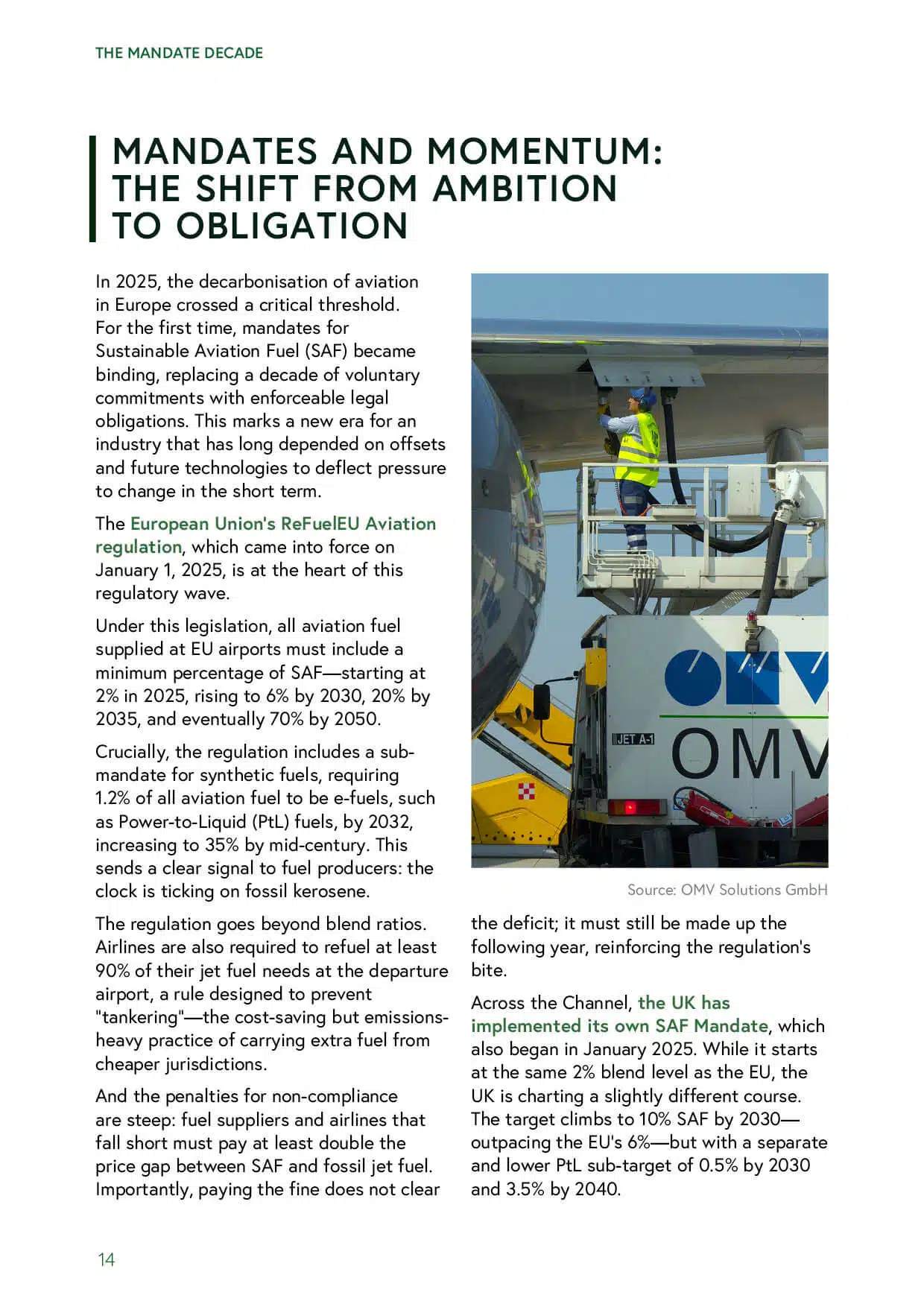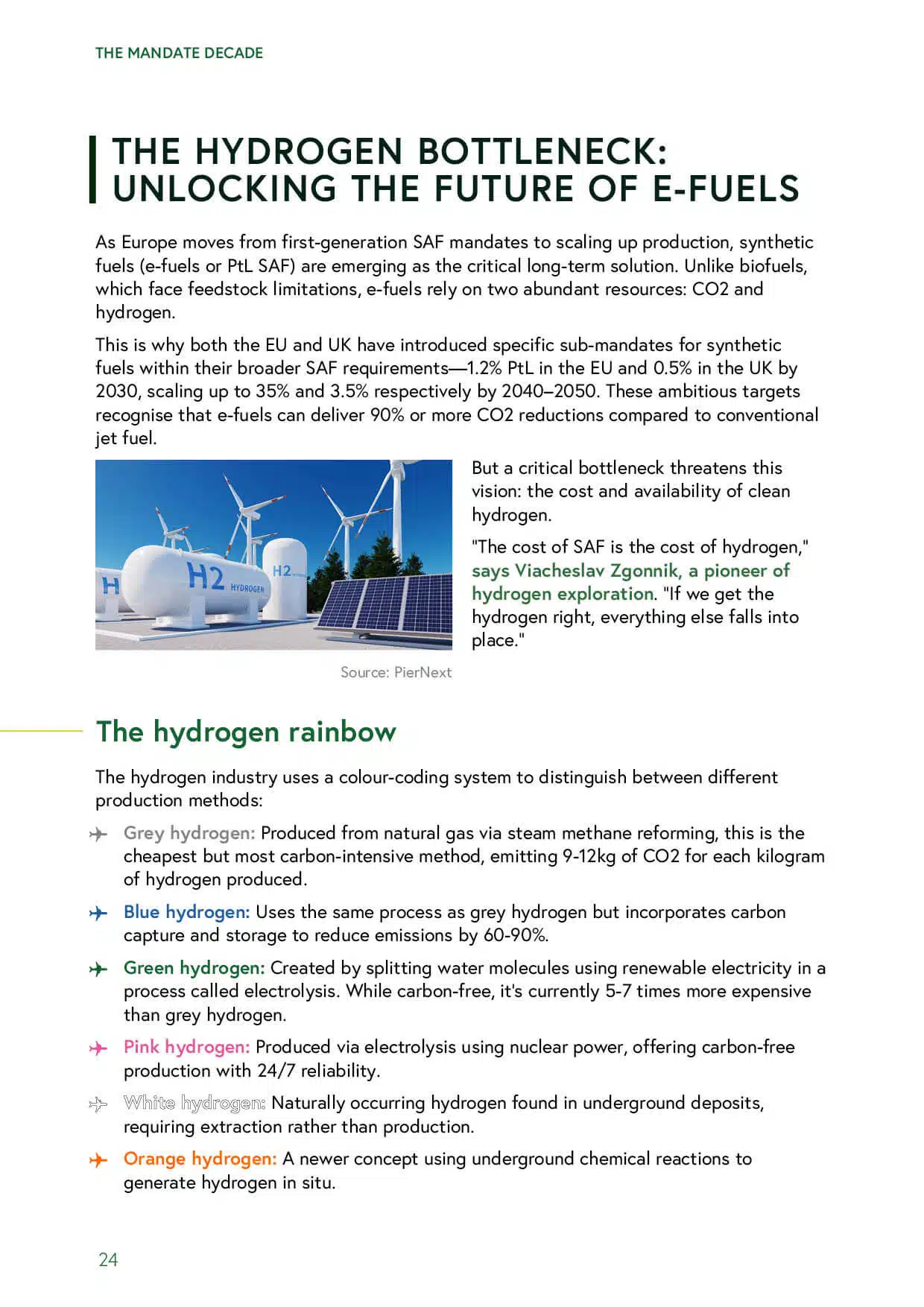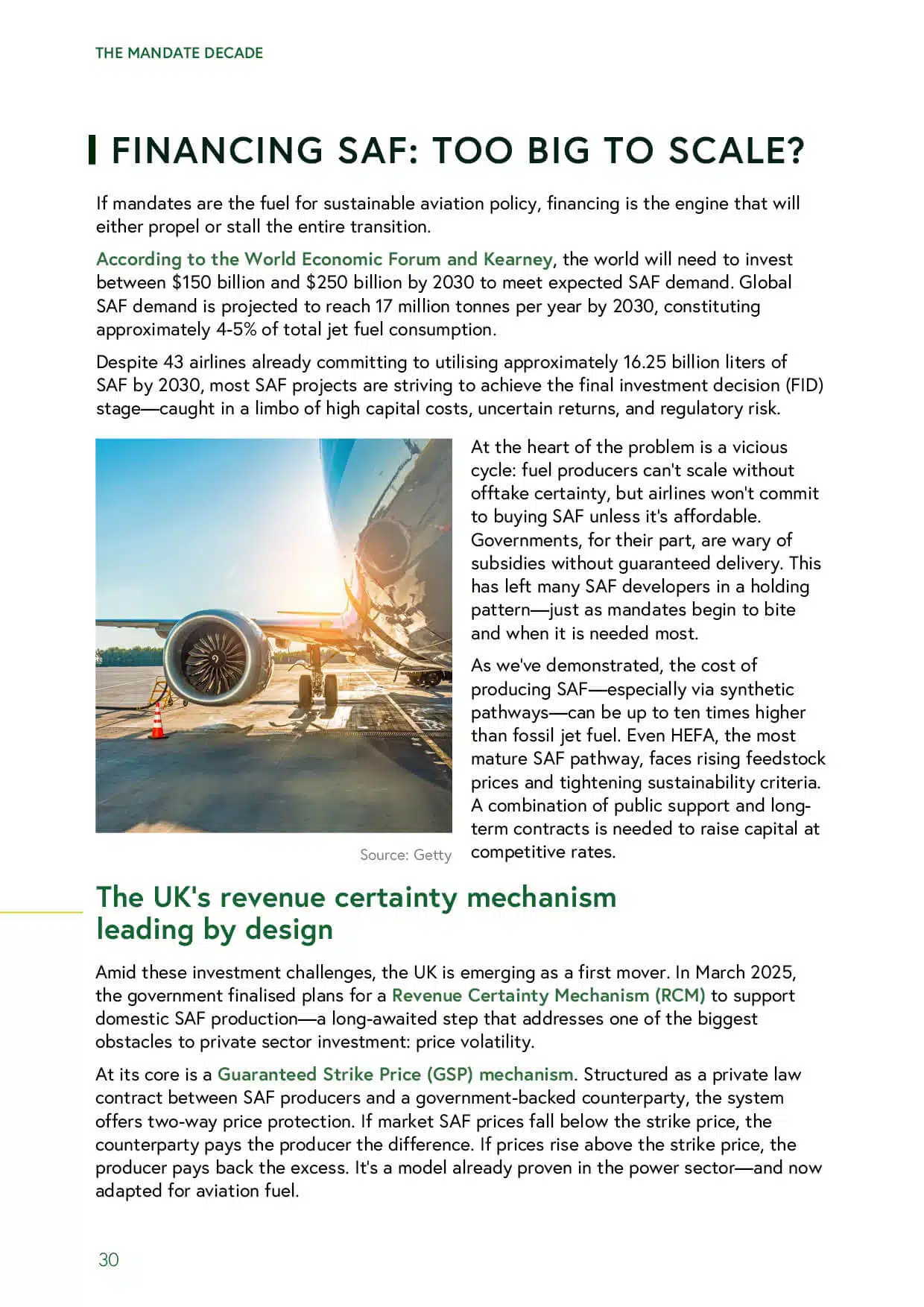REPORT
The Mandate Decade
SAF Regulatory Developments, Project Financing & More
The Mandate DecadeSAF Regulatory Developments, Project Financing & More
Our report offers a deep dive into the next decade of aviation decarbonisation. As regulations tighten and climate impacts become more visible, the question is no longer if the transition will happen – but how fast, and at what cost.
THE MANDATE DECADE
Aviation’s carbon budget is running out. Climate disruption is no longer theoretical. Airports across the globe are already feeling the effects – extreme heat, runway damage, flooding. Research shows that over 360 airports could be at risk by 2100, with global air traffic projected to double by 2043.
At the same time, emissions from today’s fleet are locking in carbon-intensive operations well beyond 2050. With only 18.4 billion tonnes of CO2 left in aviation’s carbon budget to hit net zero, we could exhaust that allowance by 2032.
Enter the Mandate Decade. Europe is at the heart of this transition. With new regulations such as the EU’s ReFuelEU Aviation and the UK’s SAF mandate, a new era of compulsory carbon reductions is underway. But while mandates are multiplying, fuel supply remains limited, and green hydrogen – the backbone of e-fuels – is still costly and infrastructure-poor.
Produced for the upcoming Sustainable Aviation Futures Congress in Amsterdam (6 – 8 May 2025), our new report offers a timely deep dive into the next decade of aviation decarbonisation.





5 Challenges and Opportunities
Policy momentum vs production reality
With binding SAF mandates now in force in both the EU and UK, Europe faces a growing gap between regulatory ambition and industrial readiness, as SAF currently makes up less than 1% of total aviation fuel consumption.
The hydrogen bottleneck
Hydrogen represents approximately 60% of PtL SAF production costs, creating a critical constraint for synthetic fuels. Without breakthrough solutions in green, white, or orange hydrogen, e-fuel mandates risk becoming unattainable.
Financing the transition
According to the World Economic Forum, the industry needs $150-250 billion of investment by 2030, yet most SAF projects struggle to reach Final Investment Decision (FID) due to high capital costs and uncertain returns.
Strategic regional opportunities
The Iberian Peninsula, particularly Spain, is emerging as Europe’s potential SAF powerhouse due to abundant renewable energy, strong refining capacity, and strategic location, potentially generating €56 billion in GDP by 2050.
Passenger engagement as catalyst
Beyond mandates and corporate commitments, pioneering airline programmes like Lufthansa’s Green Fares and SAS’s EuroBonus Conscious Traveler initiative demonstrate that passenger engagement can drive additional SAF demand and create a shared sustainability journey.

